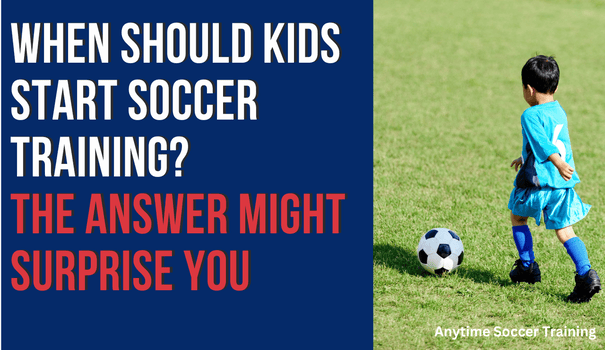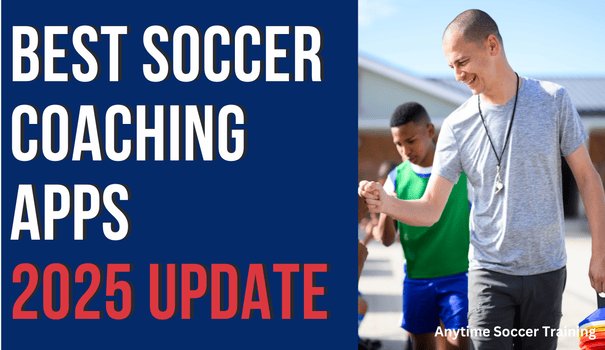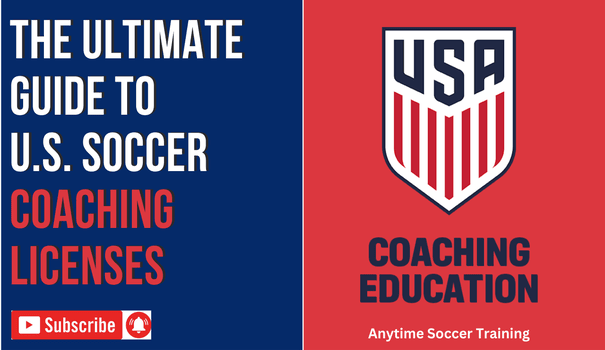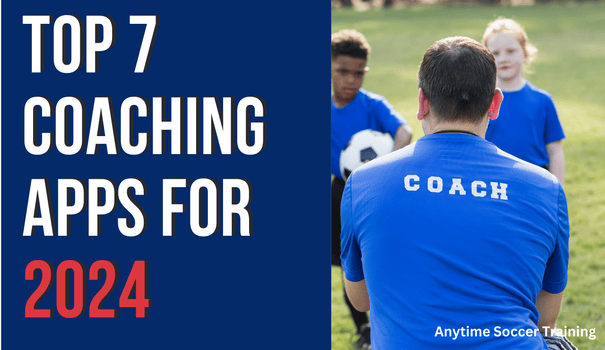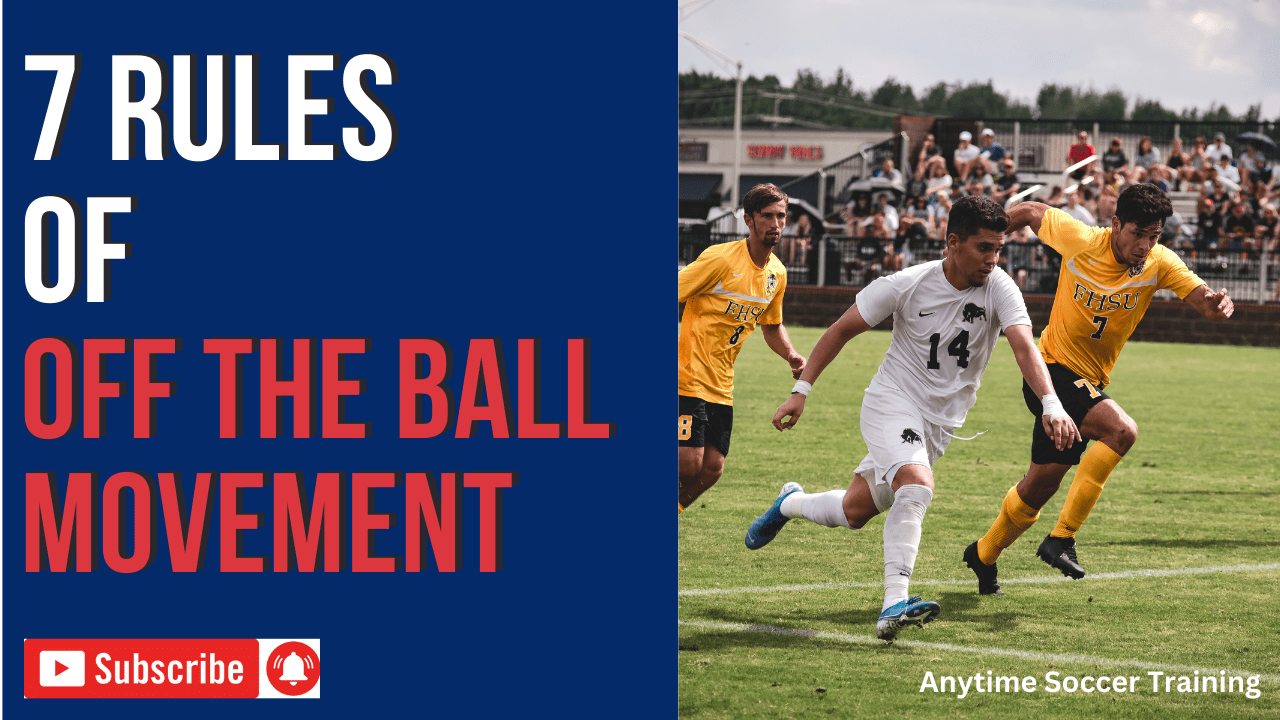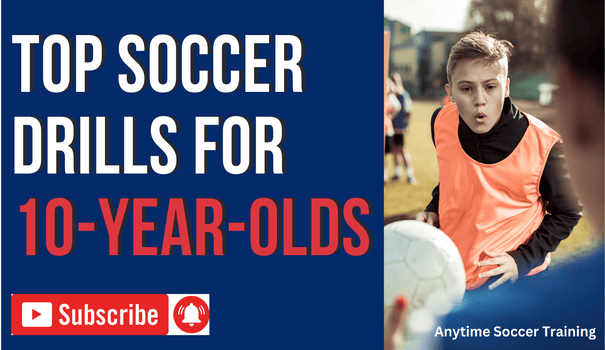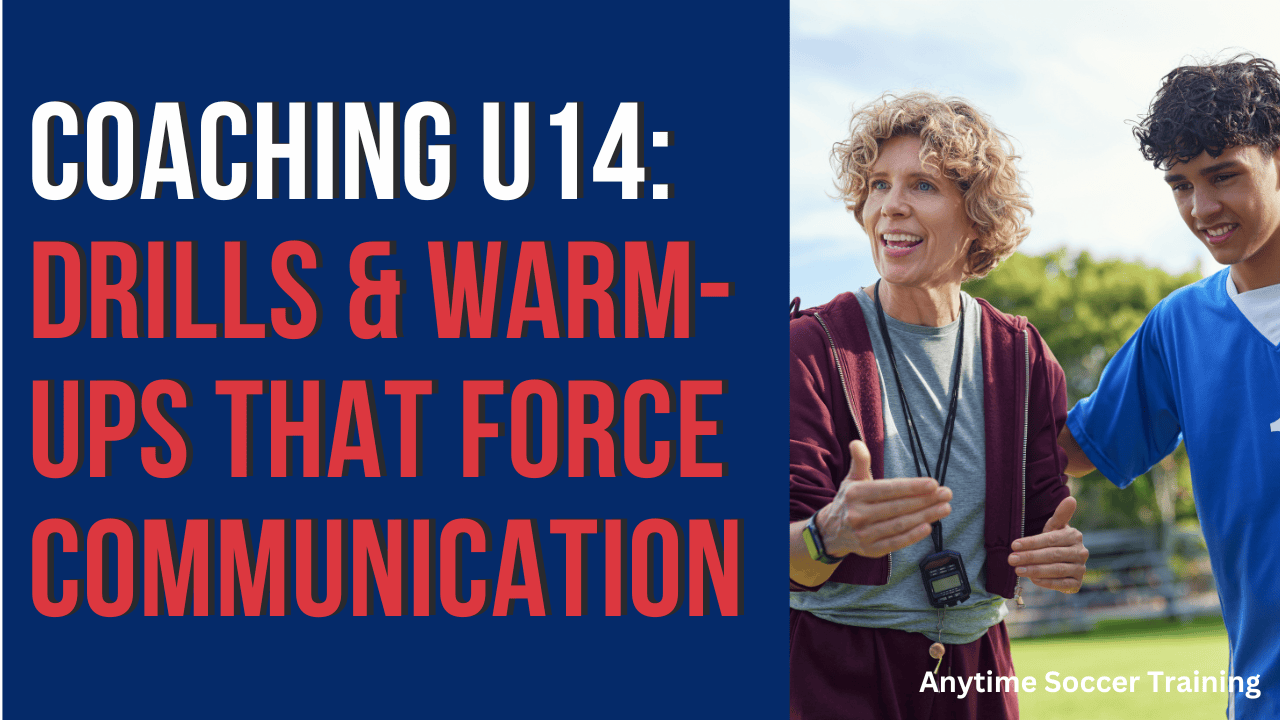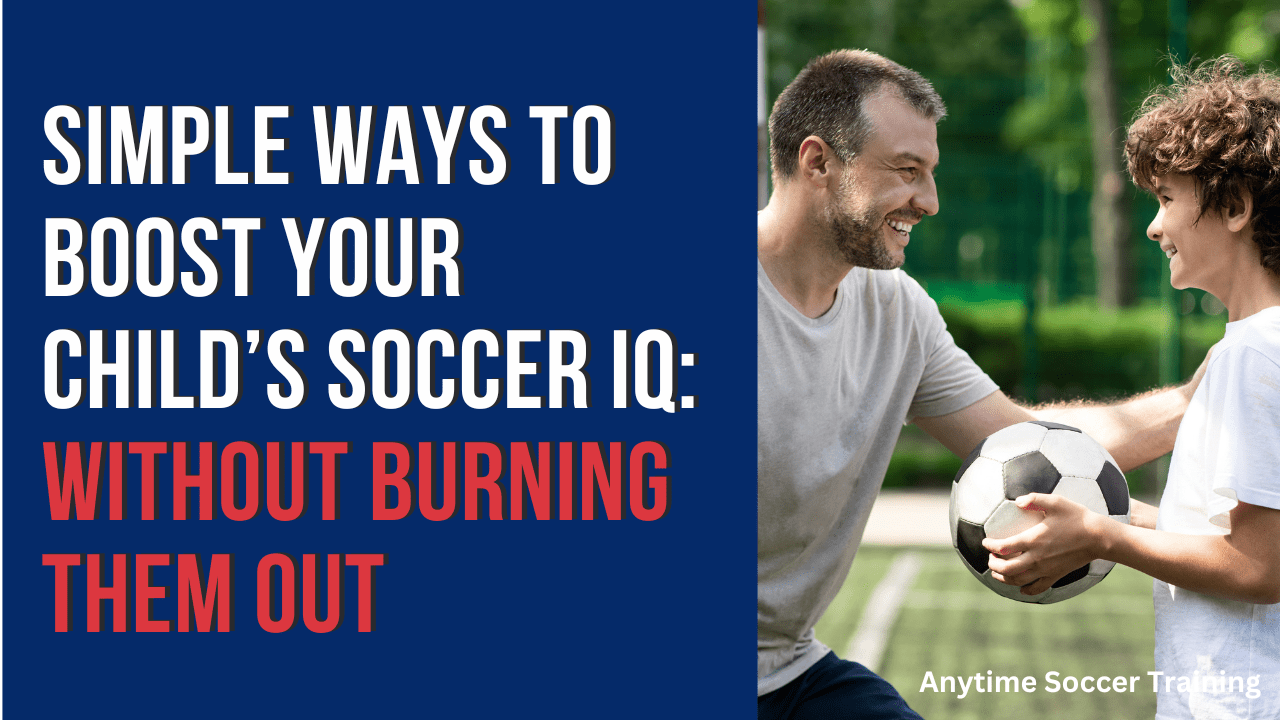
I’m a soccer dad with two boys, and like many of you, I’ve had seasons where my sons played on struggling teams. Losing streaks can chip away at motivation, and you start wondering what you can do to help without overstepping.
I’ve been there. I’m not a pro coach, but I care deeply about my kids’ development and confidence—and over time I’ve learned some simple, effective ways to make an impact.
Step 1: Focus on One or Two Concepts a Year
When I first started helping my sons, I wanted to fix everything at once: positioning, passing, defending, mindset etc.
Big mistake. Kids learn best when things are broken down. This drove my boys crazy!
From that experience, I realized it’s far more powerful to pick one or two key concepts per year and consistently reinforce those along with their regular training.
For example, one season we focused on always defending between the ball and the goal, and also, breaking lines with your pass.
In another season, we drilled, keeping the head up to scan the field. These small focus points compound over time, building soccer IQ without overwhelming them.
Step 2: Learning the Principles of Play
One of the best things you can do for your child’s soccer IQ is to introduce them to the principles of play. These are the simple frameworks coaches use all over the world to explain what good soccer looks like in different phases of the game.
Here’s how I broke it down for my kids:
When Attacking
- Width: Spread the field so defenders have to cover more ground.
- Depth: Don’t all bunch up—have players behind and ahead of the ball.
- Penetration: Look for ways to move the ball forward, whether by dribbling, passing, or shooting.
- Support: Always give the player with the ball safe options to pass.
When Defending
- Delay: Slow down the attack—don’t dive in, just stall them.
- Pressure: Closest player gets tight to the ball.
- Cover: Teammates back up the pressuring player in case he gets beat.
- Balance: Make sure the defense isn’t overloaded on one side—stay organized.
In Transition
- When Winning the Ball: Can we counter quickly? Or do we need to keep it and settle?
- When Losing the Ball: Can we win it back fast? Or do we need to drop and regroup?
By teaching these as simple rules of thumb, kids start to understand that soccer isn’t just running around—it’s problem solving. And the cool thing is, you can teach these principles in 3v3 or indoor games where the situations show up over and over again.
Step 3: Get Experience by Coaching Small Formats
You don’t need a UEFA license to make a difference. I gained confidence coaching by volunteering in 3v3 leagues and indoor soccer. Smaller formats are great because:
- Kids get way more touches.
- Mistakes happen quickly, which means learning happens quickly.
- You can introduce big-picture concepts (spacing, effort, anticipation) in a smaller, less intimidating environment.
And since it’s not “elite,” the pressure is lower for you as a parent-coach too.
Related: The Benefits of Futsal
Step 4: Use Film as a Teaching Tool
One of the most eye-opening things I’ve done is watch games back with my sons. But here’s the twist: I don’t just point out their mistakes. Instead, I ask them three things:
- What did you do well?
- Where can you improve?
- Find one thing a teammate did well, and one thing they can improve.
This shifts the conversation away from “Dad’s critique session” to them learning to analyze the game. And it builds empathy for teammates—helping them become leaders, not just players.
Step 5: Translate Lessons into Metrics
Kids need something concrete to track. That’s where objective metrics come in. You don’t need fancy software—just pick a few basics:
- Pass completion %
- Number of times they scanned before receiving the ball
- Effort plays (second efforts, recovering after losing possession)
When you tie film study and practice to measurable numbers, it becomes actionable. Combine this with SMART goals(Specific, Measurable, Achievable, Relevant, Time-bound), and your child can see progress over weeks, not just hope they’re “getting better.”
Step 6: Keep It Fun
None of this matters if your child stops enjoying the game. Keep training light, mix in challenges, and let them play freely. The backyard 1v1 battles with my boys often teach them as much as drills.
Tools That Helped Us Along the Way
You don’t need a massive budget, but a few essentials make this easier:
- Coaching Clipboard with Dry Erase Board: Check it out on Amazon
- Set of Training Cones: View on Amazon
- Portable Pop-Up Goals: Shop on Amazon
- Agility Ladder and Training Hurdles: See on Amazon
- Whistle with Lanyard: Get it on Amazon
- Soccer Starts at Home by Tom Byer – This book completely reshaped how I thought about home training.
The Big Picture
If you’re a parent like me, you may not have all the answers—but you don’t need to. Pick a couple of focus areas each year. Volunteer in small-sided soccer to sharpen your coaching eye. Watch film with your child, but make them lead the analysis. Track simple metrics so improvements feel real.
And above all, keep it fun. That’s how you build skill, confidence, and love for the game.
Free Training Plan
If you’d like a ready-made structure to get started, I invite you to take the 7-Day Soccer Skills Challenge Plan. You’ll get seven free follow-along sessions delivered to your inbox, one each day.
Each session takes just 10–15 minutes, covers essential skills, and is 100% follow-along—no coaching experience needed.
Start the 7-Day Soccer Skills Challenge today and give your child the boost they deserve.
